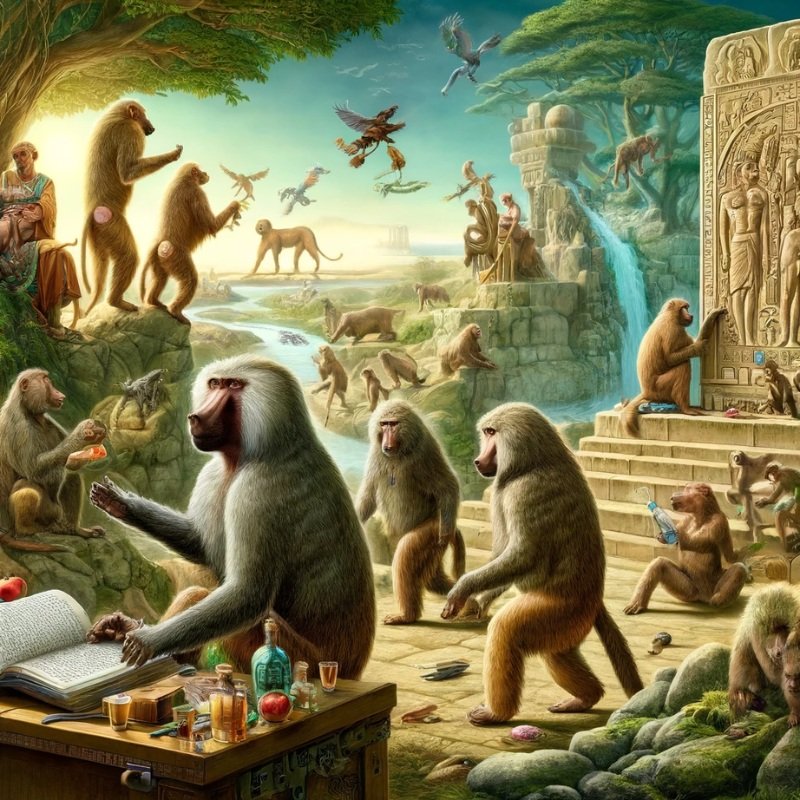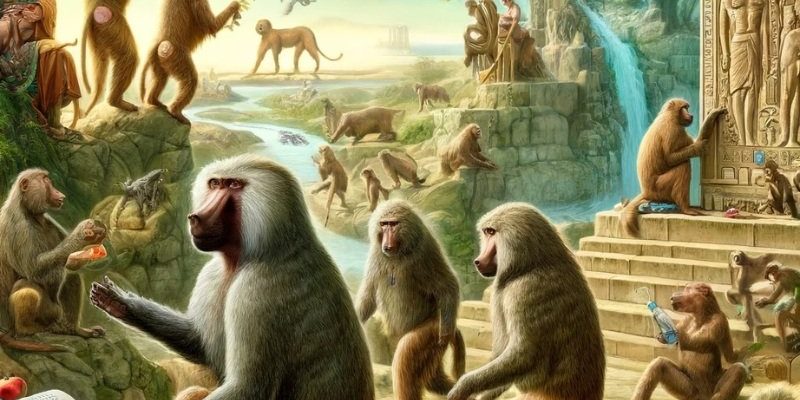
Imagine sipping your coffee while chatting about how animals influence our stories and beliefs. It’s fascinating how something as seemingly simple as a baboon can reflect our values, fears, and hopes. They’ve been woven into the fabric of many cultures, appearing in ancient art, religion, and everyday life. Let me explain how the baboon has made its mark on folklore and cultural narratives across different societies.
Baboons in African Folklore
In many African cultures, baboons symbolize both wisdom and trickery. Different tribes tell tales that highlight these traits. For instance, among the Akan people of Ghana, the baboon is known for its intelligence, often depicted as a sage or advisor. These stories reflect the community’s appreciation for cleverness and cunning in overcoming obstacles.
On the flip side, the *trickster* aspect of the baboon is equally prominent. In several folklore tales, baboons can outsmart larger animals, showcasing a belief in the power of wits over brute strength. This duality—wisdom and mischief—resonates deeply with human nature. It’s a reminder that knowledge and cunning can often lead to success in tricky situations.
These folktales often serve a greater purpose. They teach lessons about morality, encourage cleverness, and provide a cultural identity. The clever baboon, always one step ahead, mirrors societal values about how intelligence can triumph over physical prowess.
Baboons in Egyptian Mythology
Moving to ancient Egypt, baboons took on yet another symbolic significance. They were associated with the god Thoth, the deity of wisdom, writing, and magic. Thoth was often depicted as a baboon or as a man with a baboon’s head. The connection highlights how ancient Egyptians viewed baboons as sacred animals, representing intelligence and communication.
In Egyptian lore, Thoth was responsible for maintaining the universe’s order and recording the outcomes of the judgment of souls. This association elevates the baboon from a mere animal to a cosmic figure, showcasing its importance in the cultural and spiritual landscape of ancient Egypt. You might say, they went from swinging in the trees to holding the keys to the afterlife!
The reverence for baboons didn’t stop there. Their images adorned temples and tombs, communicating the belief that these creatures were protectors of knowledge and secrets. This cultural significance emphasizes how integral baboons were in spiritual practices and daily life.
Baboons in Modern Media
Fast forward to today, and you’ll find baboons popping up in various forms of media. From animated movies like *The Lion King* to documentaries highlighting their social interactions, these creatures continue to capture our imagination. In *The Lion King*, Rafiki, the wise mandrill, embodies the spirit of the baboon, showcasing their role as a guide and sage.
In modern storytelling, baboons often represent themes of community and social structure. They are known for their complex hierarchies and social behaviors, reminding us of the importance of family and cooperation. It’s interesting how these traits resonate with our own societal structures, making them relatable to audiences worldwide.
With the rise of social media and wildlife documentaries, baboons have become symbols of conservation efforts. Their portrayal in these mediums not only entertains but also raises awareness about their habitats and the environmental challenges they face. It’s a powerful reminder of how cultural representation can influence public perception and environmental advocacy.
Baboons in Art and Literature
Baboons also find their place in art and literature, often symbolizing various human traits. Renowned artists have depicted them in paintings and sculptures, capturing their essence. For example, the surrealist artist Salvador Dalí included baboons in his works, using them to explore themes of dreams and subconscious.
In literature, baboons appear in various narratives as reflections of human behaviors. They can represent chaos or provide comic relief, emphasizing the unpredictable aspects of life. Their presence in stories often serves as a metaphor for human traits such as loyalty, betrayal, or intelligence, allowing us to see ourselves in these animals.
Consider the classic *Aesop’s Fables*, where animal characters often deliver moral lessons. Baboons, with their cleverness and social interactions, often remind readers of the complexities of human relationships. They serve as vessels through which we can explore our own emotions and societal dynamics.
The Role of Baboons in Scientific Study
Interestingly, baboons aren’t just cultural icons; they’re also crucial in scientific research. Their social behaviors provide valuable insights into human psychology and social structures. Researchers study baboon troops to understand the dynamics of leadership, conflict resolution, and even parenting.
These studies show how closely related we are to these primates. Their intricate social lives mirror our own, offering clues about our evolution and behavior. Understanding these animals helps scientists develop conservation strategies, emphasizing the importance of preserving their habitats.
In a way, studying baboons brings it all full circle. It bridges the gap between folklore and science, showcasing how these animals are both symbols in our stories and real creatures with significant roles in our ecosystems.
Baboons symbolize much more than just animals swinging in the trees. They are reflections of human characteristics—wisdom, cunning, community, and resilience. From African folklore to Egyptian mythology, and even in modern media and scientific study, baboons continue to inspire, entertain, and educate us.
Their duality as wise guardians and mischievous tricksters resonates across cultures, reminding us of the rich tapestry of stories we share globally. As we navigate our lives, these creatures remind us that intelligence and social bonds are essential for success, both in the wild and in our personal journeys.
So, next time you see a baboon, take a moment to appreciate its cultural significance. It’s not just another animal; it’s a reminder of our connection to nature and the stories that bind us as human beings.

